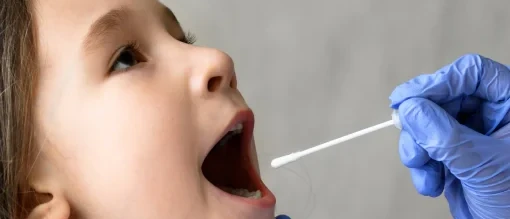Still the Most Trusted Drug Screening Method
Urine drug testing remains one of the most established and reliable methods for detecting a wide range of substances. It is widely used across criminal justice systems, addiction treatment programs, and workplace drug screening.
While highly dependable, urine testing can be vulnerable to tampering if not properly supervised. Common forms of tampering include using synthetic urine or adding adulterants to the sample to interfere with results. In this blog, we’ll explain how to conduct urine testing effectively and highlight some of the tricks people may use to manipulate the outcome.
If your patients or employees ask questions like “Will ketamine show up on a urine test?”, “Does codeine show up in urine?”, or “Will cannabis be detected in a urine test?”, the answer is yes—though it depends on the detection window for each substance.
What is Urine Cup Testing?
This is a point-of-care testing method where the donor provides a urine sample directly into a cup that includes built-in test strips. The strips provide quick results for drugs such as:
-
Cannabis
-
Cocaine
-
Opiates
-
Amphetamines
-
Benzodiazepines
In fact, some of our Urine Cups test up to 18 substances. Take for example our cup, GBDOA-1186, which tests for Amphetamines, Barbiturates, Benzodiazepines, Buprenorphine, Cocaine, EDDP (Methadone Metabolite), Fentanyl, Ketamine, LSD, Methamphetamines, Morphine (Opiates), Oxycodone, Pregabalin, Propoxyphene, K2/Spice, THC (Cannabis), Tramadol, 6MAM (Heroin Specific).
With over 12 different urine cup variations, with AttoSure, you can test the best combination of substances for your needs.
Step-by-Step: How to Use a Urine Cup
-
Prepare facilities and check expiry date
-
Collect sample directly from donor
-
Check temperature to prevent substitution
-
Wait 5 minutes for results to appear
-
Read the test using the results guide
Common Challenges
Urine drug testing is highly effective, but like any screening method, it can be compromised if best practices are not followed. Here are some of the most common challenges faced during urine drug screening—and how to address them:
1. Adulteration
Adulteration refers to the intentional tampering of a urine sample to alter test results. Some of the most common adulteration methods include:
-
Dilution: The donor may consume excessive water or add water directly to the sample to lower drug concentration. Diluted urine often appears lighter in color and may have a lower-than-normal specific gravity.
-
Chemical Adulterants: Substances such as bleach, vinegar, salt, or commercial adulteration products are added to interfere with test results.
-
Cold Samples: A urine sample that is significantly below body temperature (less than 32°C) can indicate that it was not freshly produced and may have been stored or substituted.
2. Substitution
In this case, donors attempt to use synthetic urine or someone else’s drug-free urine to pass the test. Common substitution tactics include:
-
Concealing synthetic urine in body-worn containers: These are often hidden in undergarments and kept warm using heating pads or body heat.
-
Switching urine samples in the restroom: Donors may attempt to swap their sample with one they've brought in a hidden container.
3. Interpretation Errors
Even when the urine sample is authentic, inaccurate reading of test results can lead to false positives or negatives. Common issues include:
-
Reading the results too early: Test lines may not have fully developed, leading to misinterpretation.
-
Reading the results too late: Most cup tests should be read within a specific window—typically 5 to 10 minutes. Reading after the window can cause lines to fade or change color.
-
Mishandling the cup or tilting it: This can cause the reagents to run or interfere with accurate results.
Some Example Detection Windows
-
Cannabis: 1-3 days (single use), 3+ weeks (chronic use)
-
Cocaine: 1-5 days
-
Methadone: 1-4 days
-
Ketamine: 2-4 days (single use), up to 4 weeks (chronic use)
-
ect
Pro Sample Collection Tips:
-
Always observe the collection and check temperature within the first 4 minutes to ensure authenticity
-
Have a good look around the room for substances that could be used to dilute or substitute the sample
FAQs on Urine Cup Testing
Q: How soon after drug use can urine tests detect substances?
Most drugs can be detected 4–6 hours after ingestion.
Q: How long are drugs detectable in urine?
It varies. Cannabis may remain detectable for days or weeks because of the way cannabis is stored in fat cells, while others like cocaine are cleared in 2–3 days.
Q: What is the ideal urine temperature?
Between 32–38°C (90–100°F) which is the human body temperature. Cold urine often indicates tampering.
Q: Does tramadol show up as an opiate in urine tests?
Not always. It depends on the test panel. A specific test for synthetic opioids may be needed.
Why Urine Drug Testing Still Leads in Detection Accuracy
Urine testing offers a longer detection window than oral fluid and is often more cost-effective for screening multiple drugs. However, close supervision and best practices are essential to ensure integrity.
Explore our webinars for a full demonstration of urine drug screening best practices, sample collection procedures, and guidance on interpreting results in real-world scenarios. To learn more about our training services, click the button below.
Read About Our Training

